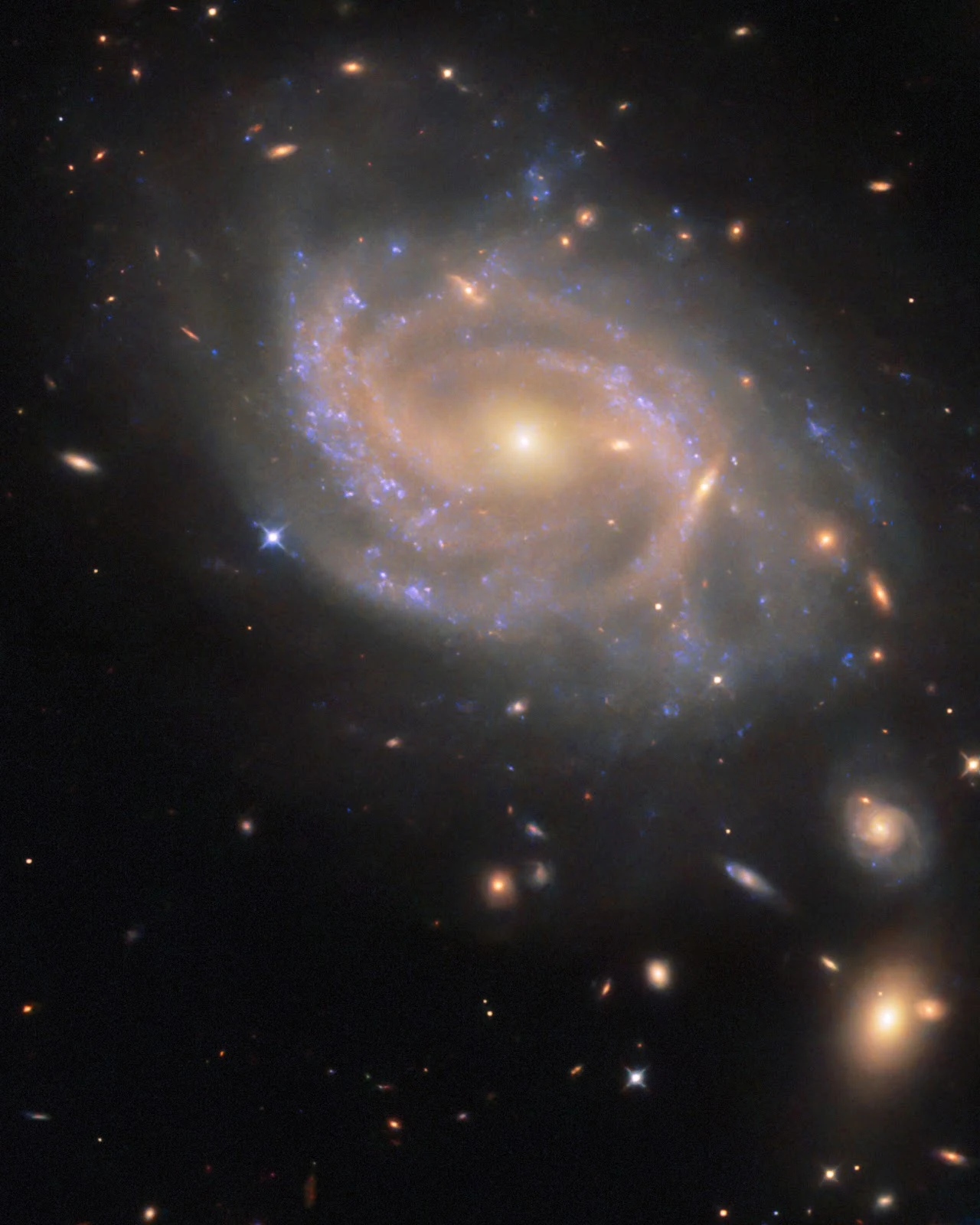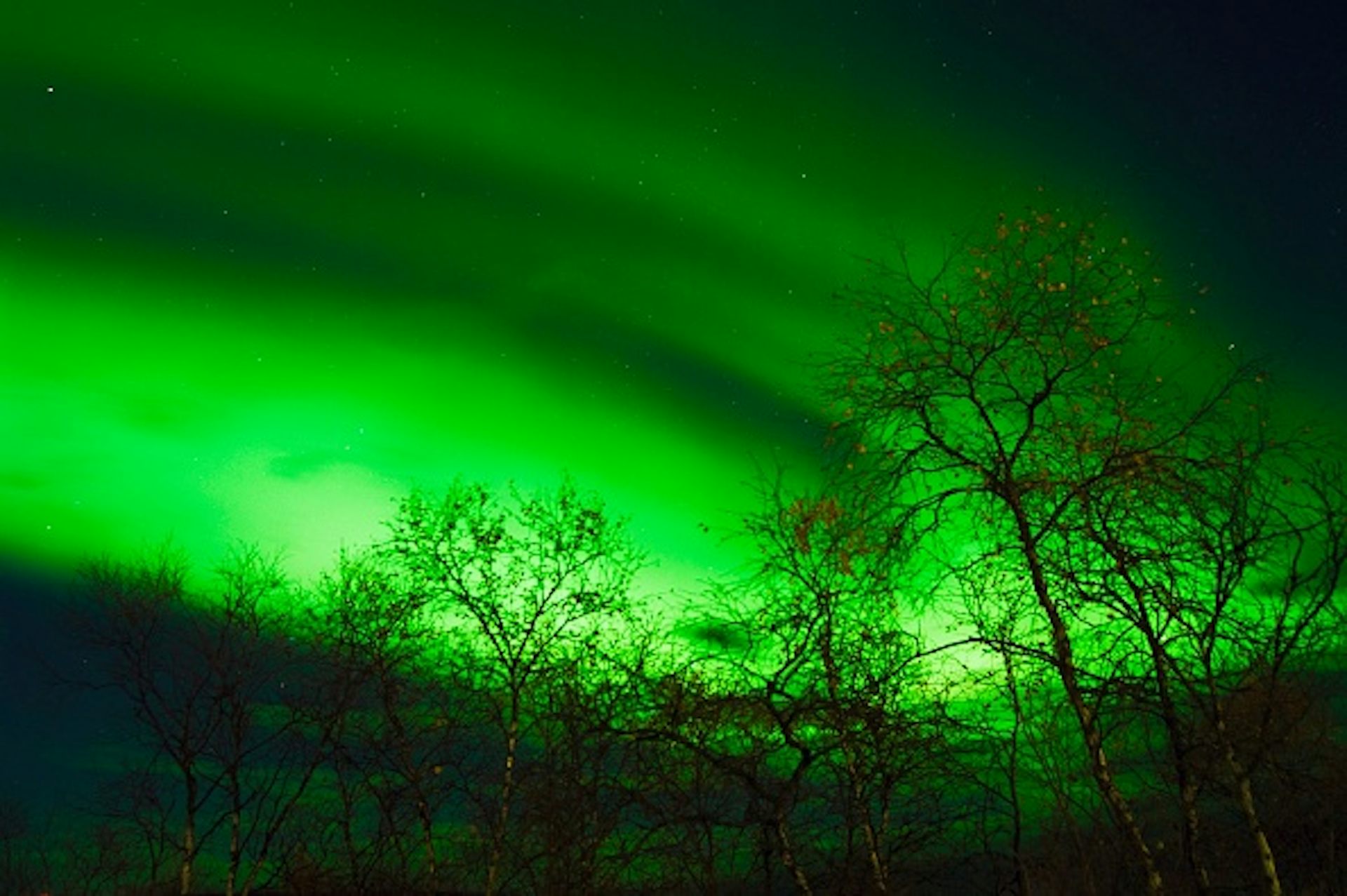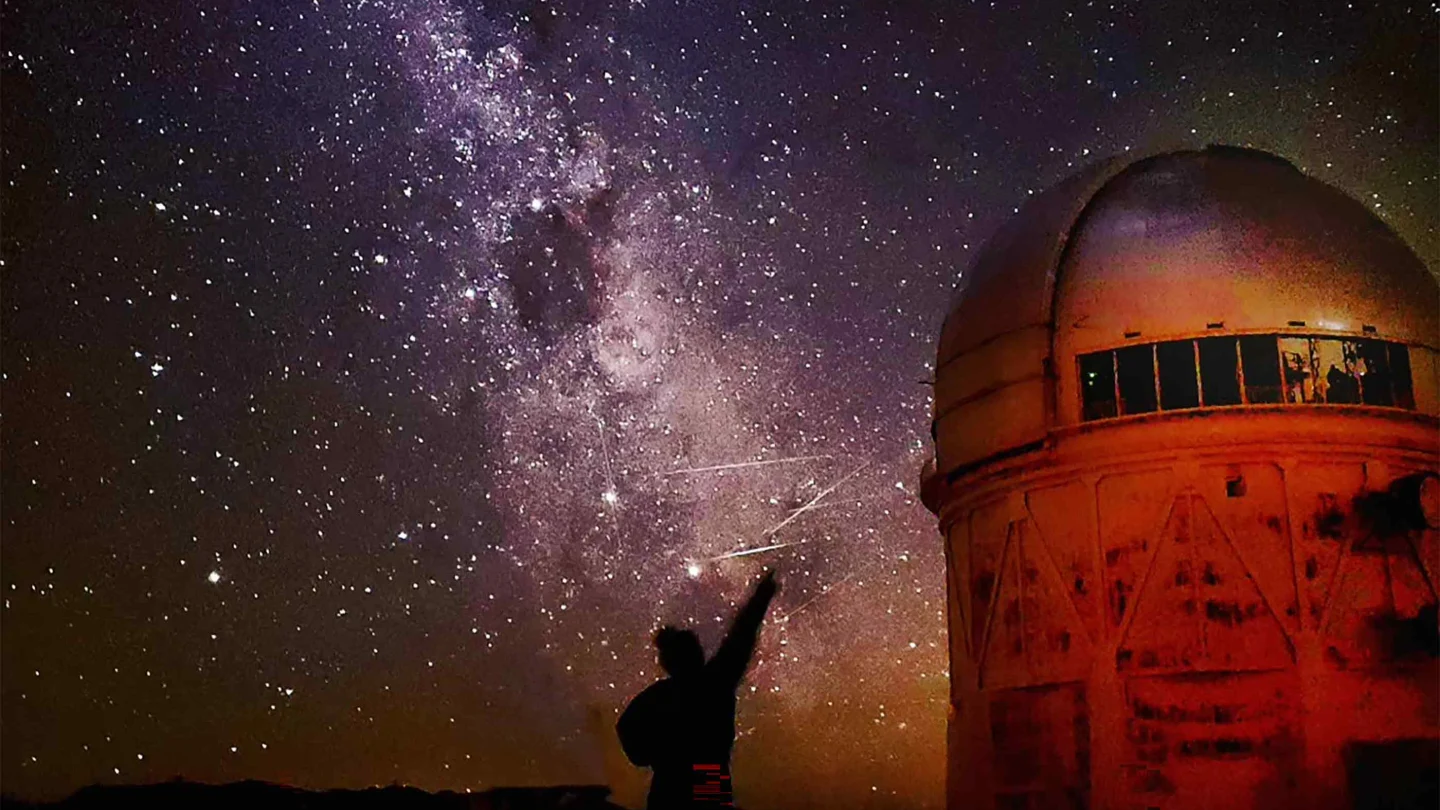
NGC 3285B
A spiral galaxy with a disc made up of several swirling arms. Patchy blue clouds of gas are speckled over the disc, where stars are forming and lighting up the gas around them. The core of the galaxy is large and shines brightly gold, while the spiral arms are a paler and faint reddish colour. Neighbouring galaxies - from small, elongated spots to larger swirling spirals - can be seen across the black background.
Take a grain of rice and hold it between your thumb and forefinger at arm’s length while looking up at the night sky. The patch of sky hidden behind that tiny grain of rice probably contains thousands of galaxies—each with around half a trillion stars. Some of these stars are ancient, nearing the end of their tens-of-millions-of-years lifespans; others are just beginning to form from clouds of gas and debris left behind by older stars that exploded as supernovae.
What lies behind that grain of rice is a tiny fragment of a dynamic, evolving, ever-changing, and expanding universe. A universe of which our ancient prophets were completely unaware as they crafted imaginative descriptions of its origins—descriptions written just a few thousand years ago that portrayed it as a small, unchanging cosmos, with a flat Earth at the centre covered by a dome.
But let’s not be too hard on them. As they stood in their Canaanite pastures, the Earth must indeed have looked flat and small, and the sky would have seemed like the roof of a great tent, adorned with tiny lights and with the sun and moon suspended from it. To them, the Earth appeared fixed and immobile while the dome overhead turned slowly, or perhaps invisible spirits moved the lights across the heavens each night. They didn’t know where the sun went after sunset and imagined the moon might hide in a deep valley during the day.















.jpg)










